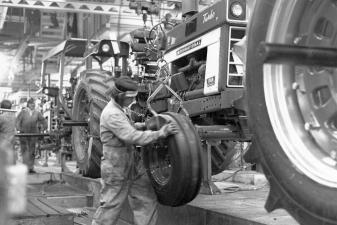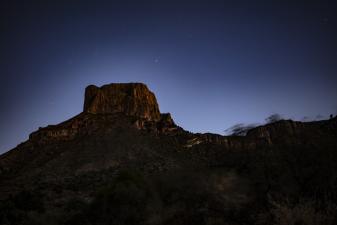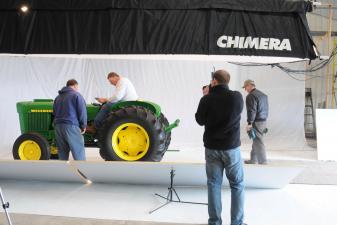Oh, the Places You’ll Go

This article was originally published as a feature in the Ageless Iron section of Successful Farming magazine, where Lee Klancher is a regular contributor.
On a fateful day in the spring of 2000, my phone rang at 3:30 a.m.
“This is Warwick Schuberg,” a voice heartily roared into my ear. “I want you to come photograph a trip across the Australian Outback!”
Even barely half-awake, I quickly accepted. I’m a sucker for a good story, especially when chasing it down includes traveling to remote places halfway around the world.
As it happens, the trip led me to discover (and photograph) possibly the last J&H McLaren portable steam engine in existence. Discoveries like that one are part of what I love about traveling as a tractorhead.
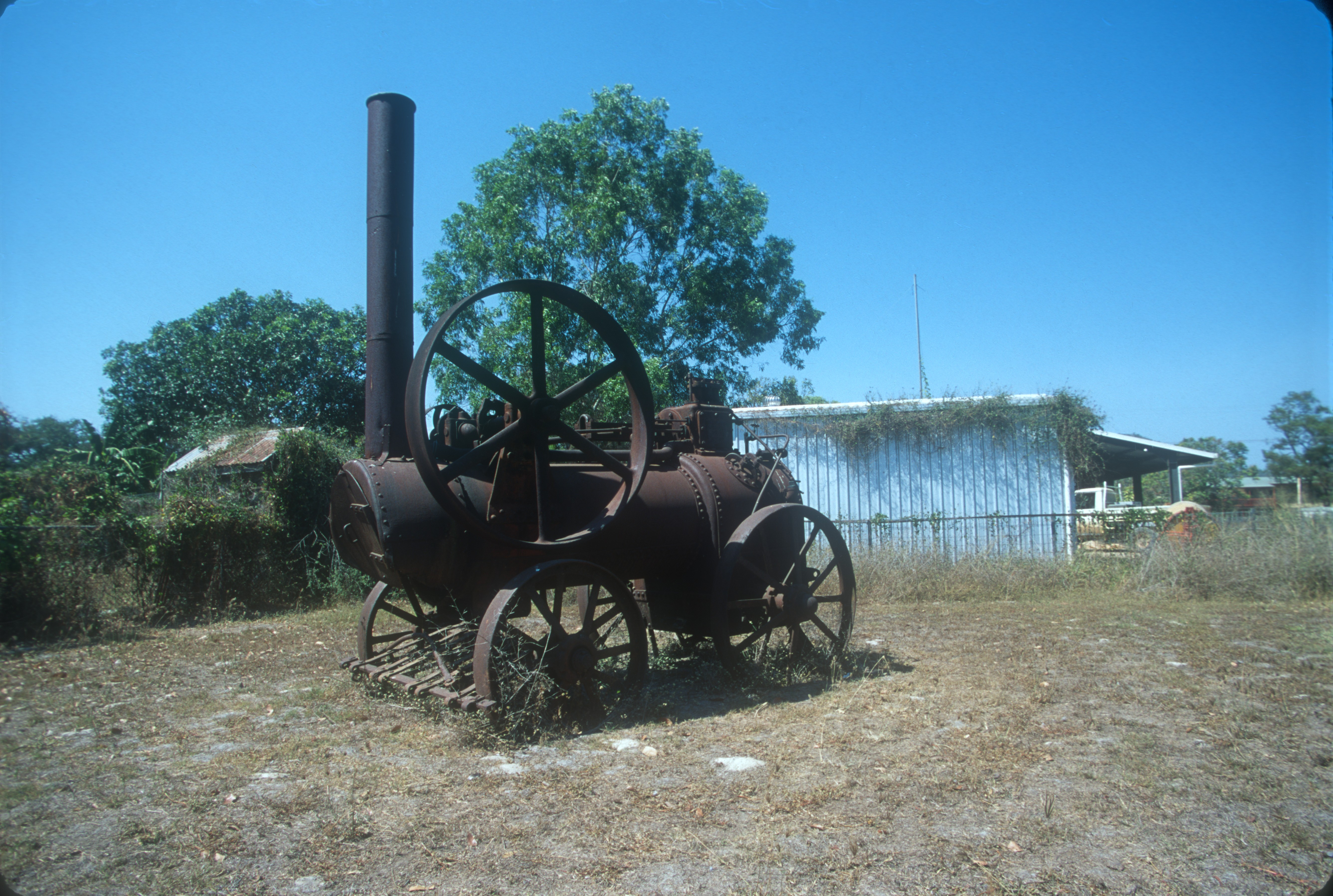
This is Leeds No. 278 from 1886, photographed in Australia in 2002. Lee Klancher
The joys of tractor travels come in many different flavors, ranging from warm apple pie, fall-scented sunsets, and crisp spring mornings to painful encounters with hostile flora, fauna, and weather. The former make me appreciate how fortunate I am to do what I do, and the latter give me wonderful stories to tell.
While actual pain on the road is relatively rare (not counting stubbed toes in hotel rooms), the Texas outdoors takes the prize for inflicting physical damage. Cacti are the most routine violators, as the hostile plants regularly pierce body parts and leave painful welts.
The insects are worse. On a shoot of an International Harvester Mogul in Moody, Texas, in 2016, I lay down on the ground for a shot, right on top of a hill of fire ants. Fire ants are the insect terrorists of Texas. Each one can bite multiple times and, if you are allergic to them, you can experience nausea, dizziness, or simply stop breathing. They respond viciously when attacked.
When I sat on their hill, these fire ants did just that and bit me more than one hundred times.
Short story: I’m not allergic so I continued breathing. Which is not to say the experience is one I care to repeat.
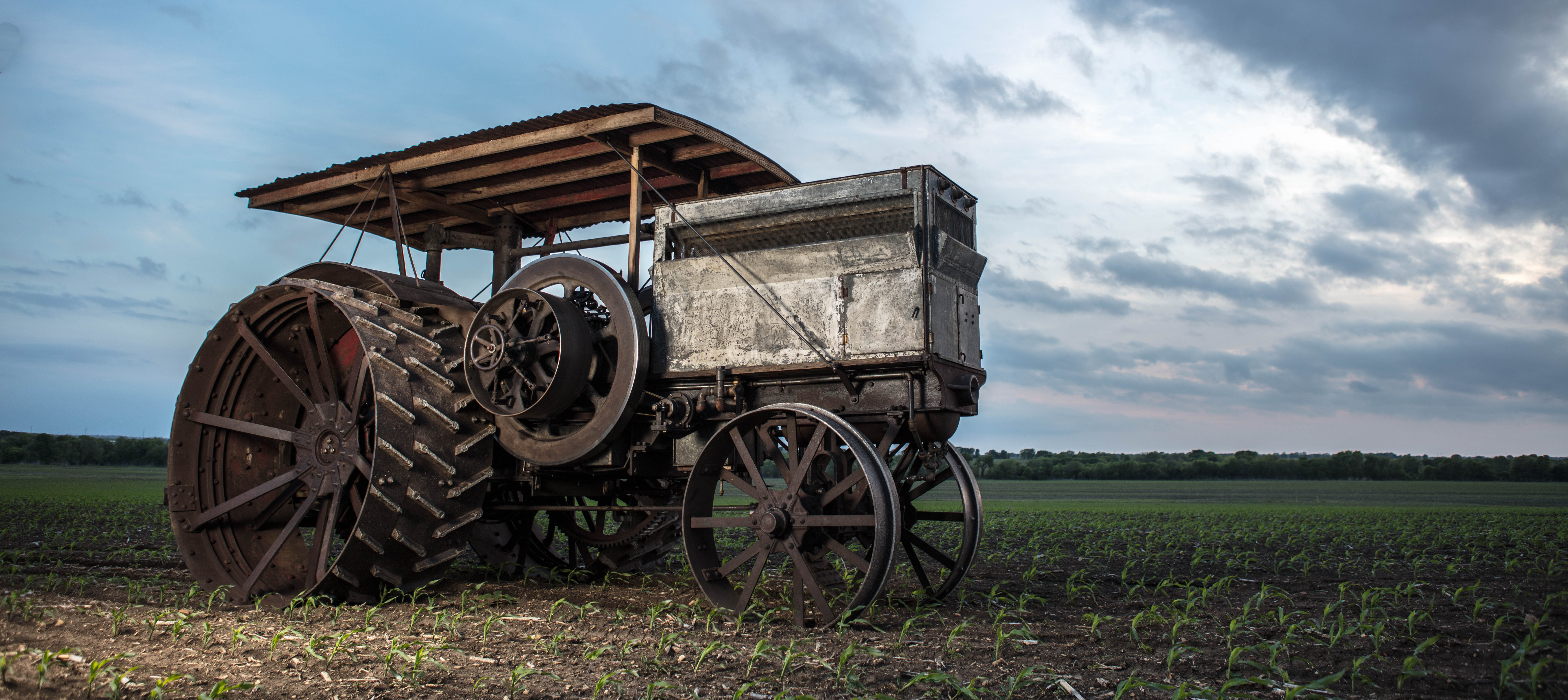
This 1911 Titan 45 was photographed on April 5, 2018, at the collection of Lou Buice in Texas. While shooting at Lou’s place, the photographer inadvertently laid down in a hill of red ants and was bitten more than one hundred times (his wife counted the marks when he got home!). Lee Klancher
In Minnesota, weather was more often the source of adventure, with one memorable shoot on a crystal clear, zero-degree day with winds gusting to twenty-two miles per hour, meaning a wind chill of (so it felt) 417 degrees below zero. The air temp was so cold it caused the battery in the camera to shut down. I warmed a spare battery in my pocket, and I’d swap it for the cold one, shoot a few more frames until that one died, and repeat.
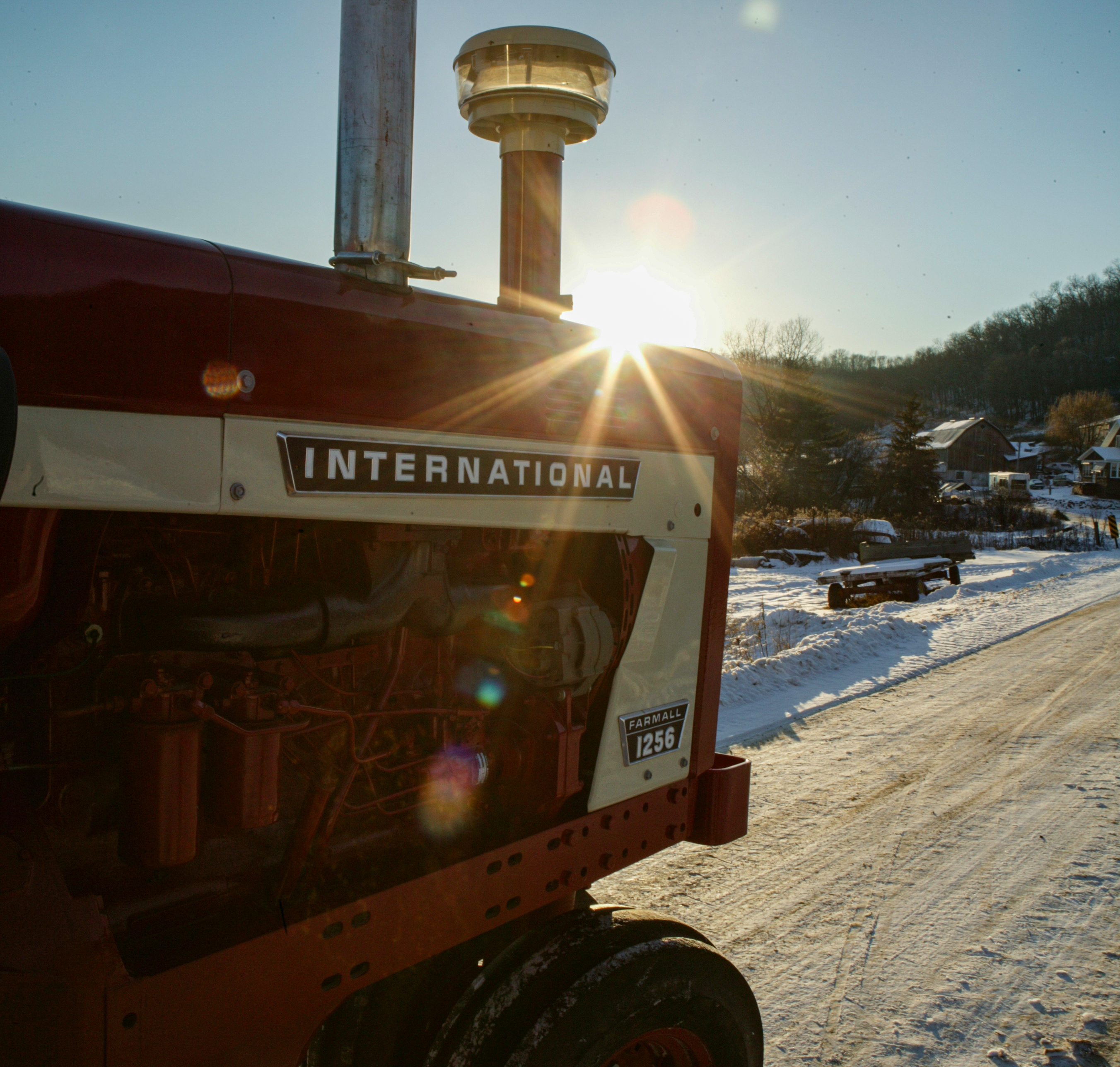
These three images were shot on January 17, 2007, at the home of the late Sylvester Hohfield in southern Minnesota. Wind chills were nearly 20 degrees below zero on this day. Shown is Sylvester’s 1969 International 1256 and 1964 International 2806. Lee Klancher
Heat has also provided its share of travails. In the fall of 2017, we were shooting tractors for my book Red 4WD Tractors in Kununurra, Australia, and the high temperature was 108 degrees. The air was so hot one of our crew turned bright red from sunstroke. A video camera simply shut down and refused to run.
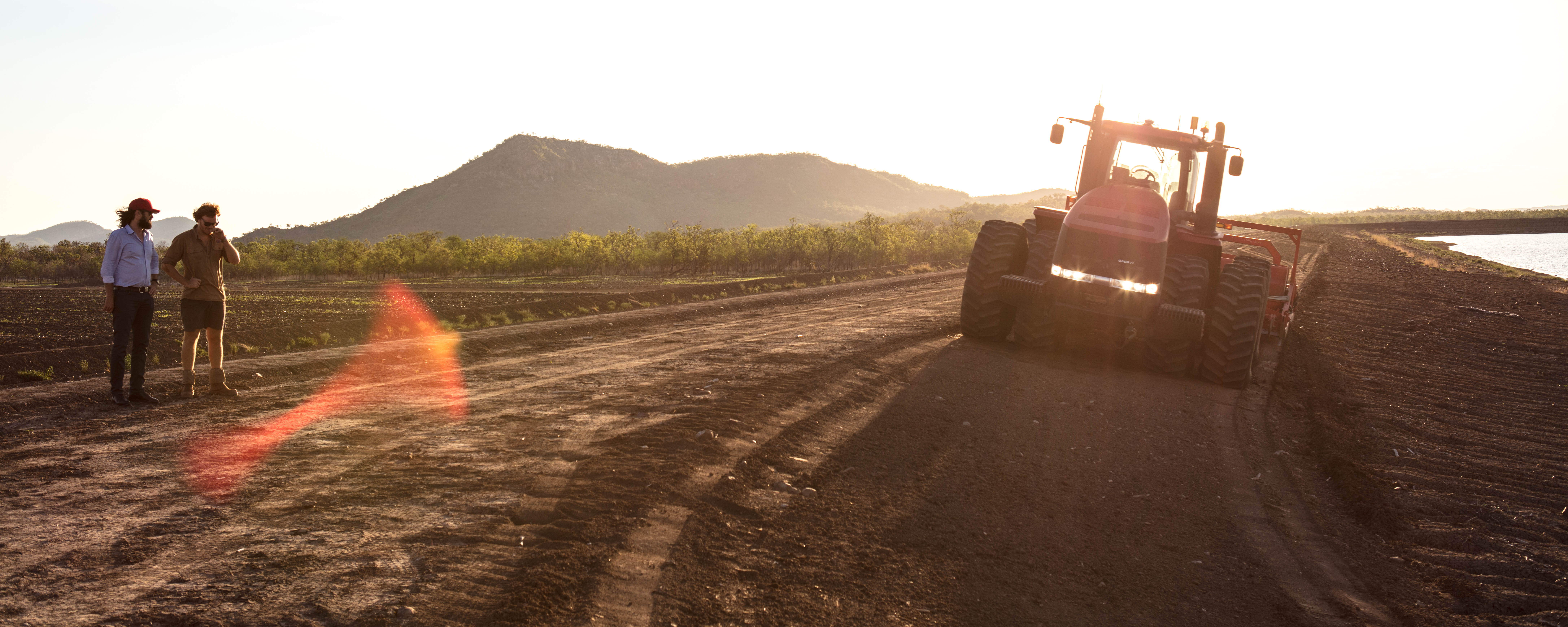
Kunnunura, Australia is a remote area in northern Australia favored with a large water reservoir and semi-arid (nearly a desert) climate. While photographing machines on KAI Farms, a large farm development in the area, temperatures hit 108 degrees. Videographer Josh Kufahl, shown talking with Case IH Australia General Manager Pete McCann, was covered in heat rash after this shoot, and Josh’s Sony videocamera shut down because of extreme heat the following day. Lee Klancher
The adverse conditions give me good stories; the people offer great memories. A favorite was meeting the late Darius Harms, a farmer and tractor collector who was the driving force behind the Half Century of Progress Show.
Darius was a big man, in every sense of that word, with a gravitas to him and a deep, gravelly voice. He didn’t spare words and was a force of a nature. When he moved, you had the sense that the world had no choice other than to go along with him.
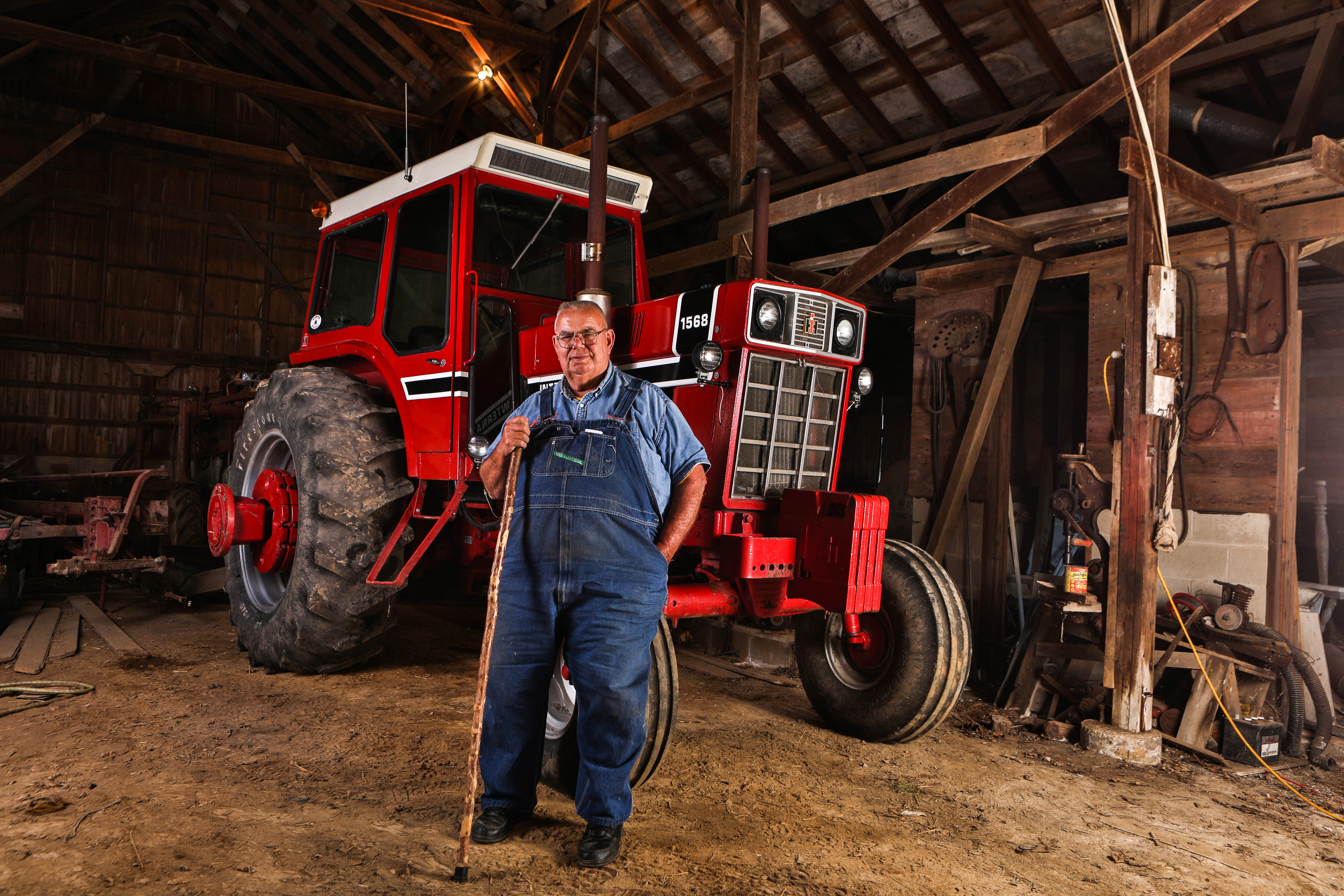
The late Darius Harms had this black stripe 1568 stashed in a falling down barn a few miles from his home near Rantoul, Illinois. This photo was taken on September 16, 2012. Lee Klancher
When I first met him, all I knew was he had a rare IH 7488. After photographing that machine, he kept revealing he had more interesting tractors stashed in dusty corners of his sprawling complex of farm buildings in Illinois. He saved the best for last.
About 8 p.m., as I was finishing up shooting an International 1568 black stripe, Darius said, “Did you know that I have tractors in an abandoned air force hangar?”
I love big open industrial spaces, and they are hard to find on farms, where farmers who have big open spaces quickly fill them with machinery. The hangar was beautifully rusty, full of interesting machines, and big enough to park a B-52 inside.
I shot that night until after midnight.
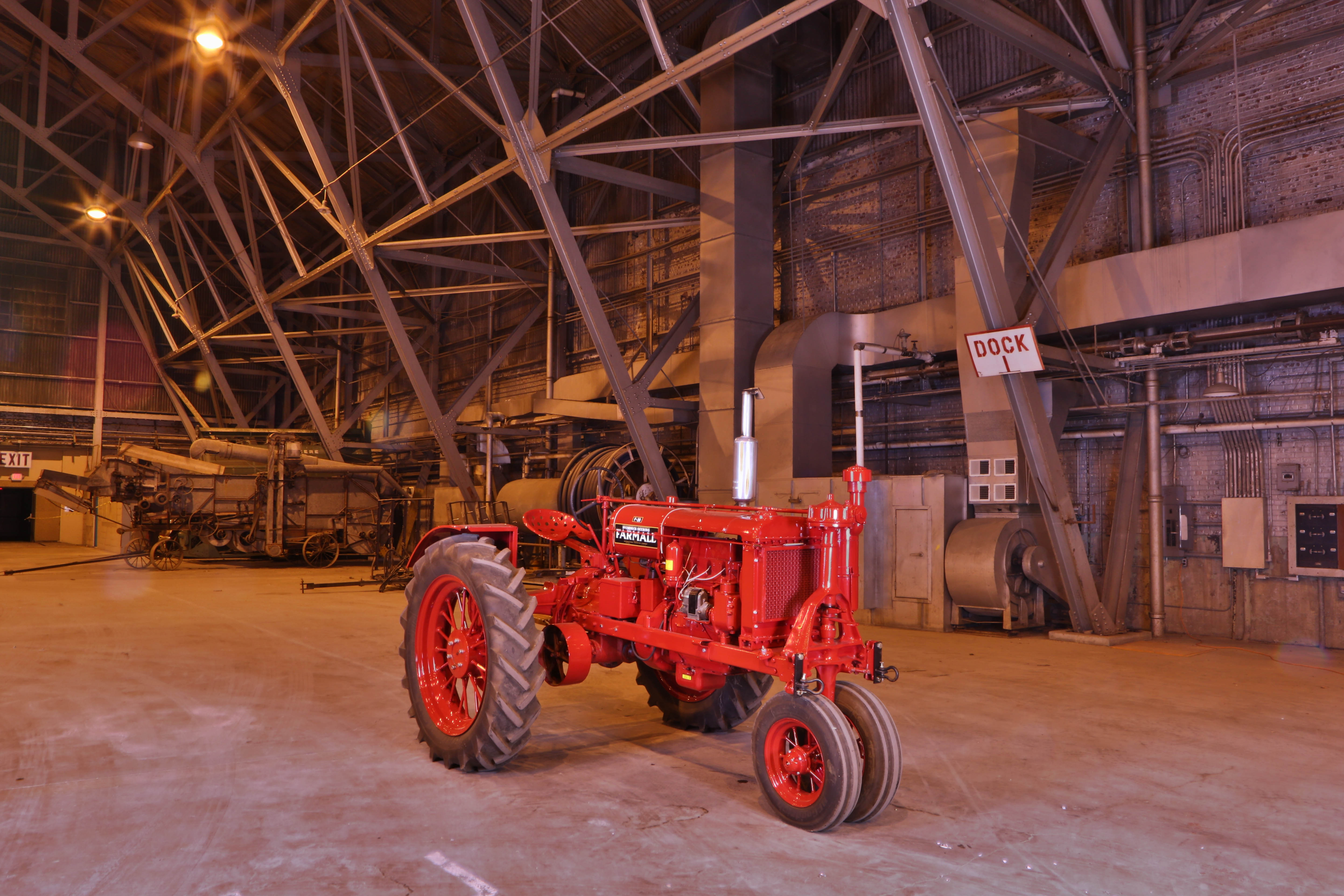
Hanger One at Chanute Air Force Base in Rantoul, Illinois, on September 16, 2012. This was where the I&I Tractor Club stored their machines and was part of the Half Century of Progress Shows for years. It now is rented out to a manufacturing company.
A memorable April 2012 shoot took place near Farmall-Land with museum owner Jerry Mez and my father, Paul Klancher. Dad was in town and agreed to help me on a morning shoot of Jerry’s 1939 Farmall M in front of an old farmhouse. We shot at sunrise, and overnight temps had plummeted into the forties and the wind was gusting to twenty-four miles per hour.
I had large umbrellas set up, which Jerry and my Dad held in the wind. Jerry wore shorts, as he always does, and both were freezing in the wind and struggling to hold the umbrellas while making jokes. That morning provided a wonderful memory of an adventure shared with family and friends.
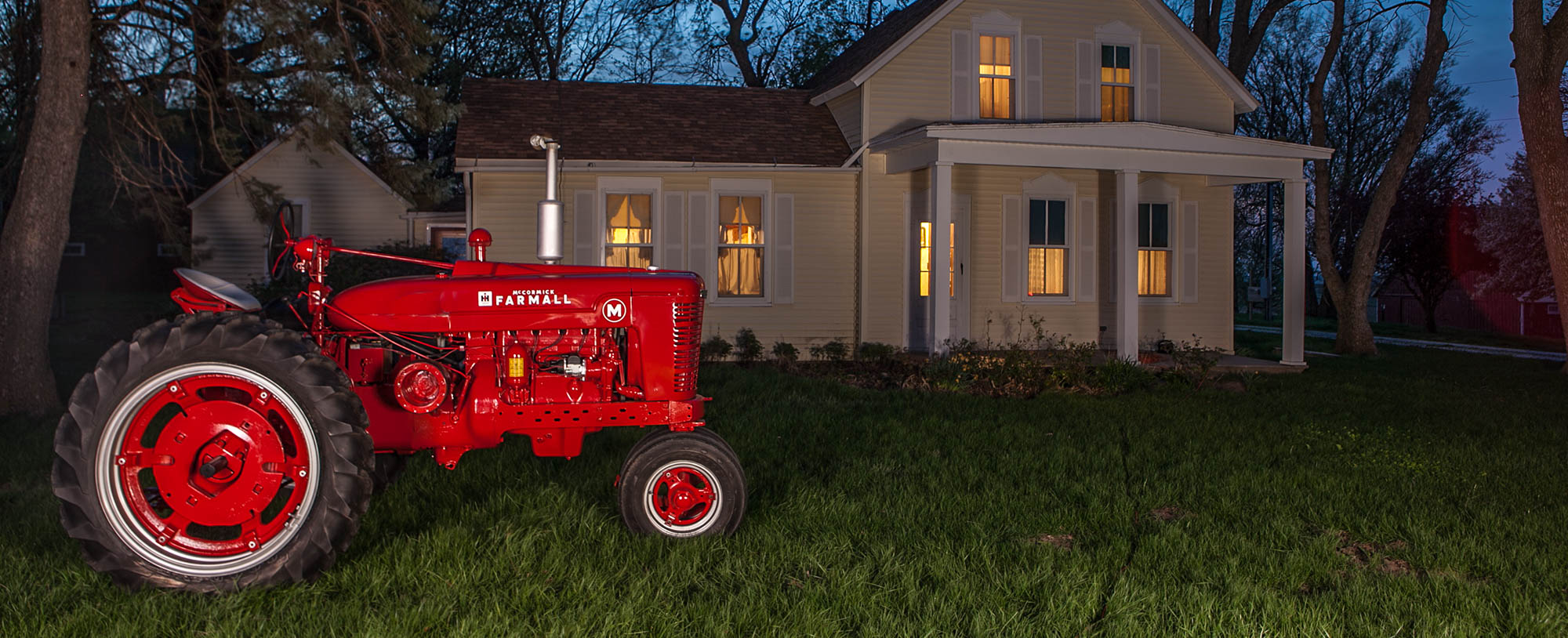
This image was made during a breezy and cold spring sunrise near Avoca, Iowa, on April 3, 2012. Jerry Mez and Paul Klancher are just off camera, struggling to hold light stands topped with six-foot umbrellas in an icy morning breeze. Jerry (as always) was in shorts. The work was done with a lot of (mostly joking) complaining about how long it was taking the photographer. Lee Klancher
My point today is that along with sharing some of the great stories I’ve been lucky enough to learn while making books, I’ll also share a few of the stories of my tractor travels on these pages, including the story of “Steve” the South American Professional Tractor Hunter, my flashes going off in an abandoned barn being mistaken for an alien invasion, and an afternoon of snake stories that includes 50-gallon drums packed full of live rattlesnakes.
Now I’ve got to go—I just heard about a pair of barn-built Steigers that were delivered to a tiny town in British Columbia and perhaps still exist, buried in a barn or rusting away in a long-lost pasture. Time to pack my bags—the road is calling.
If you would like to read more stories like this one, check out the Related Books linked below.


